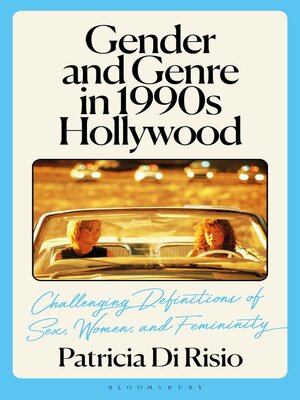Gender and Genre in 1990s Hollywood
ebook ∣ Challenging Definitions of Sex, Women, and Femininity · Library of Gender and Popular Culture
By Patricia Di Risio

Sign up to save your library
With an OverDrive account, you can save your favorite libraries for at-a-glance information about availability. Find out more about OverDrive accounts.
Find this title in Libby, the library reading app by OverDrive.



Search for a digital library with this title
Title found at these libraries:
| Library Name | Distance |
|---|---|
| Loading... |
The 1990s was a decade of significant turmoil in Hollywood cinema, which resulted in a watershed moment in the interplay of gender and genre. Patricia Di Risio argues that cinematic representations of unconventional women had an important effect on traditionally male oriented genres, such as the crime thriller, road movie, western, film noir, war film, sci-fi, and horror.
Di Risio analyses seven key films from the decade, including Blue Steel (1990), Thelma & Louise (1991), The Quick and the Dead (1995), Bound (1996), Jackie Brown (1997), G.I. Jane (1997) and Alien: Resurrection (1997), paying particular attention to their use of irony, allusion, and pastiche. She highlights how their female protagonists, a majority of whom are decidedly queer or gender questioning personas, produce an intense crossover in genre conventions, largely driven by their gender rebellion. She examines how a deconstruction of gender simultaneously allows genre hybridity and intertextuality, taking these films into unexpected new directions. In doing so, she delineates a clear line between the unconventional nature of the representation of the female protagonists and innovative changes to genre filmmaking practices.
Di Risio analyses seven key films from the decade, including Blue Steel (1990), Thelma & Louise (1991), The Quick and the Dead (1995), Bound (1996), Jackie Brown (1997), G.I. Jane (1997) and Alien: Resurrection (1997), paying particular attention to their use of irony, allusion, and pastiche. She highlights how their female protagonists, a majority of whom are decidedly queer or gender questioning personas, produce an intense crossover in genre conventions, largely driven by their gender rebellion. She examines how a deconstruction of gender simultaneously allows genre hybridity and intertextuality, taking these films into unexpected new directions. In doing so, she delineates a clear line between the unconventional nature of the representation of the female protagonists and innovative changes to genre filmmaking practices.







